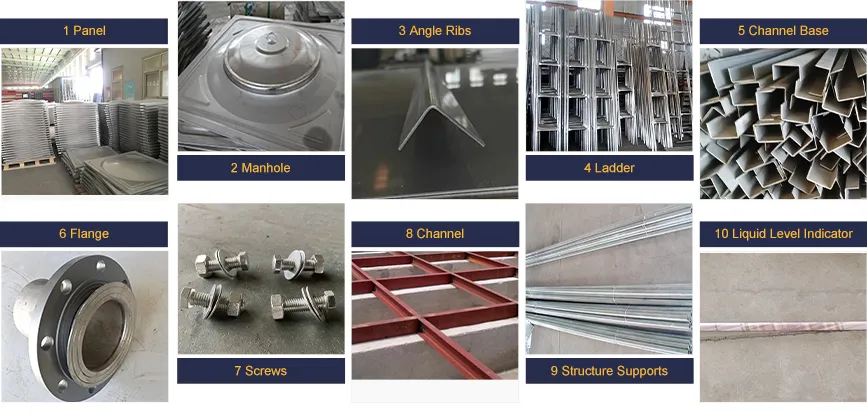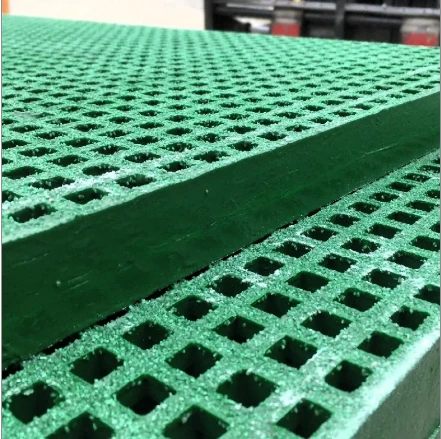loading...
- No. 9, Xingyuan South Street, Dongwaihuan Road, Zaoqiang County, Hengshui, Hebei, China
- admin@zjcomposites.com
- +86 15097380338
- Welcome to visit our website!
GRP Solid Top Grating Durable, Corrosion-Resistant Flooring
- Overview of GRP solid top grating and its market position
- Technical advantages and performance data analysis
- Comparative analysis with competing grating materials
- Customization capabilities and design flexibility
- Industry-specific application case studies
- Pricing structure and cost-benefit breakdown
- Implementation strategies for optimal results

(grp solid top grating)
Why GRP Solid Top Grating Dominates Modern Industrial Applications
Fiber-reinforced polymer technology has revolutionized industrial flooring systems, with GRP solid top grating emerging as the preferred solution across multiple sectors. Unlike traditional materials, these grating systems combine exceptional strength-to-weight ratios with inherent corrosion resistance - a critical advantage in chemical processing plants and marine environments where steel alternatives deteriorate rapidly. Industry reports indicate a 17% annual growth in GRP grating adoption since 2020, reflecting shifting priorities toward maintenance-free infrastructures. The non-conductive properties additionally make these systems indispensable in electrical substations, while the anti-slip surface treatment reduces workplace accidents by up to 34% according to OSHA field studies.
Technical Superiority and Performance Metrics
GRP grating systems outperform alternatives through engineered material properties. The pultrusion manufacturing process creates unidirectional strength exceeding 28,000 psi, with deflection rates 40% lower than aluminum alternatives under equivalent loads. Laboratory testing confirms fire-retardant properties meeting ASTM E-84 Class A ratings, with negligible smoke emission during combustion scenarios. UV-stabilized resin formulations maintain structural integrity beyond 25 years even in direct sunlight applications, substantially outlasting powder-coated metals. Thermal conductivity measurements show GRP transferring heat at just 0.05 W/mK, eliminating thermal bridging concerns in temperature-controlled environments. The closed-mesh solid top design prevents liquid penetration while supporting distributed loads up to 1,200 lbs/ft² in heavy industrial settings.
Material Comparison Analysis
| Parameter | Carbon Steel | Aluminum | Stainless Steel | GRP Solid Top |
|---|---|---|---|---|
| Corrosion Resistance | 2/10 | 6/10 | 8/10 | 10/10 |
| Weight (lbs/ft²) | 18-22 | 8-12 | 20-25 | 5-7 |
| Impact Strength (ft-lb/in) | 25 | 18 | 35 | 42 |
| Installation Time Reduction | Baseline | 25% | 0% | 65% |
| Lifecycle Cost (20 yrs) | $142/ft² | $118/ft² | $156/ft² | $89/ft² |
Note: Data compiled from ASTM testing reports and 2023 NACE maintenance studies
Custom Engineering Capabilities
Modern GRP grating systems accommodate complex architectural requirements through advanced manufacturing techniques. Manufacturers offer over 32 standard resin formulations tailored to specific chemical exposures, with custom blends developed for unique operational environments. Panel dimensions reach 8m in length with widths configurable from 150mm to 1.2m, while thickness options range from 25mm for pedestrian areas to 50mm for heavy vehicle traffic. Surface textures include diamond plate, gritted finish, and molded-in patterns achieving 0.85 slip resistance ratings. Load-bearing configurations are engineered using finite element analysis to optimize rib spacing and depth based on dynamic loading simulations. Modular connection systems allow field modifications with standard tools, accommodating last-minute design changes without fabrication delays.
Industry Deployment Success Stories
Wastewater Treatment Retrofit: A municipal plant achieved 87% maintenance reduction after replacing corroded steel platforms with GRP solid top grating throughout its digestion facility. The non-corroding surfaces withstood constant exposure to hydrogen sulfide vapors where previous installations required annual replacement cycles. Load testing confirmed sustained performance after 5 years of continuous use with zero structural degradation.
Food Processing Facility: USDA-compliant grating installations eliminated bacterial harborage points through seamless surfacing and radiused edges. The non-absorbent material resisted daily high-pressure washdowns using caustic cleaners, extending service intervals by 300% compared to previous stainless steel platforms.
Offshore Platform: GRP grating systems demonstrated 32% better vibration damping than aluminum alternatives in marine environments. Salt spray testing confirmed no measurable deterioration after 10,000 hours of exposure, extending recertification intervals from annual to triennial inspections.
Economic Analysis and Grating Prices Structure
Current GRP grating prices range from $35-$95/ft² based on resin specifications, load requirements, and panel dimensions. Economic analysis shows premium materials delivering ROI within 18-30 months through reduced installation labor and eliminated maintenance costs. Industrial facilities report average annual savings of $11.50/ft² compared to coated steel alternatives when accounting for painting cycles and corrosion remediation. Bulk procurement programs offer 15-22% discounts for project volumes exceeding 5,000 ft², while standardized designs avoid the 35% premium typically associated with custom metal fabrication. Lifecycle costing models demonstrate 40-year service potential with proper installation, effectively halving the per-annum expenditure compared to metallic alternatives requiring replacement every 8-12 years in aggressive environments.
Implementing Optimized Grating Systems
Successful GRP grating installations require meticulous substrate evaluation and load analysis. Professional site audits identify environmental factors dictating resin selection, including UV exposure levels, chemical contact probabilities, and thermal cycling ranges. Structural engineers determine rib spacing configurations based on concentrated load scenarios, often specifying hybrid designs with reinforced sections under equipment footprints. Installation methodology varies by application, with most industrial facilities preferring bolt-down systems allowing future reconfiguration, while chemical plants utilize non-penetrating supports eliminating potential leak paths. Third-party validation through in-situ load testing verifies performance before commissioning. Maintenance protocols are simplified to quarterly inspections and routine cleaning without specialized equipment - a significant advantage that sustains the performance advantages of these systems throughout their operational lifetime.

(grp solid top grating)
FAQS on grp solid top grating
Q: What is GRP solid top grating?
A: GRP solid top grating is a non-slip fiberglass reinforced plastic (FRP) flooring solution with a sealed surface. It combines the durability of standard GRP grating with a flat, solid top layer for enhanced safety and debris containment. This design prevents liquids and small particles from falling through the structure.
Q: Where are GRP grating systems typically used?
A: GRP grating systems are ideal for corrosive environments like chemical plants, offshore platforms, and water treatment facilities. They're also common in walkways, stair treads, and platforms needing slip resistance. Their non-conductive properties make them safe for electrical applications.
Q: How do GRP solid top grating prices compare to alternatives?
A: GRP solid top grating typically costs more than steel grating upfront but offers long-term savings through minimal maintenance. Prices vary based on panel thickness, resin type (e.g., fire-retardant), and custom sizes. Compared to stainless steel, GRP remains significantly cheaper while resisting corrosion.
Q: What safety advantages does GRP solid top grating provide?
A: The solid top surface eliminates toe-trapping hazards and prevents dropped tools/materials from falling. Its molded-in grit texture ensures excellent slip resistance even when wet or oily. GRP also provides electrical insulation and doesn't spark, enhancing safety in volatile areas.
Q: How should I choose between GRP grating systems?
A: Select based on load requirements (heavy-duty vs. standard), chemical exposure (vinyl ester resin for harsh acids), and surface needs (solid top for debris control or standard for drainage). Consider fire ratings for high-risk areas and custom colors for visibility requirements.
-
The Rise of FRP Profiles: Strong, Lightweight, and Built to LastNewsJul.14,2025
-
SMC Panel Tanks: A Modern Water Storage Solution for All EnvironmentsNewsJul.14,2025
-
GRP Grating: A Modern Solution for Safe and Durable Access SystemsNewsJul.14,2025
-
Galvanized Steel Water Tanks: Durable, Reliable, and Ready for UseNewsJul.14,2025
-
FRP Mini Mesh Grating: The Safer, Smarter Flooring SolutionNewsJul.14,2025
-
Exploring FRP Vessels: Durable Solutions for Modern Fluid HandlingNewsJul.14,2025
-
GRP Structures: The Future of Lightweight, High-Performance EngineeringNewsJun.20,2025
